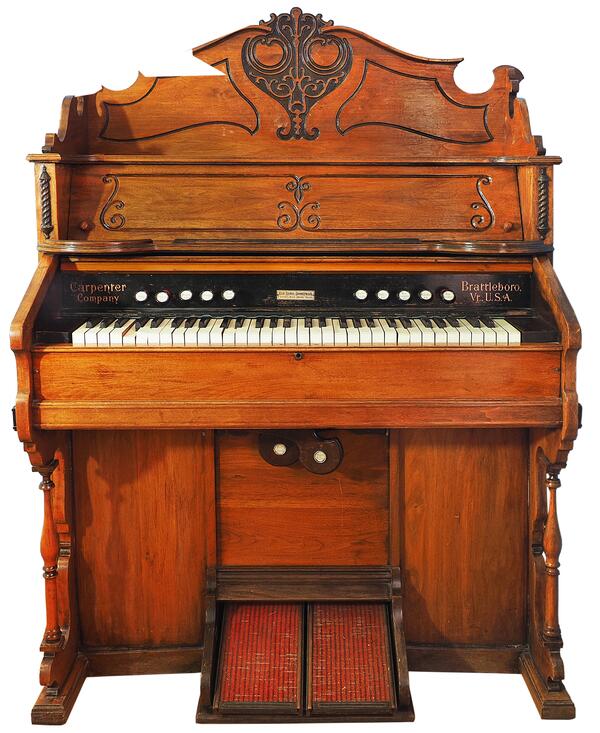According to the Explanatory Dictionary of the Russian Language by Ushakov, physharmonica (from Greek physa – windbags, and harmonia) is a ‘keyboard and wind music instrument playing via the windbags pumped by the food switches.’
The instrument was invented in the 19th century, however, a whole series of events predated it. In the 18th century a Czech craftsman made a mechanism called espressivo, which let either turn up or turn down the sound. Then, in the early 19th century, the instrument was updated by a German specialist, this is how physharmonica appeared. It was introduced to the public by the Viennese organ maker Anton Heckel in 1818. However, development of the mechanism hadn’t stop, and the specialists continued to upgrade the organ’s construction to get a better sound. The final model appeared in the 40s thanks to the efforts of the French craftsman François Debain.
The featured physharmonica was made in the factory of Julius Heinrich Zimmermann located in the house of a Baltic German Robert Karl Weiss. The instrument was acquired in the representation office of the its manufacturer, which was situated on the central Dvoryanskata street (now Sovetskaya street).
Julius Heinrich Zimmerman (1851-1923) founded one of the most famous piano companies under the same name in 1882. The businessman was born in a family of professional piano makers. In the early years he studied banking management in Germany. In the 1870s he moved to Saint Petersburg, where he opened a music store and a note publishing house. The company got famous, and a manufacturer opened the branches of his company all over Europe and Russia.
In 1880s he moved to Leipzig and moved his creation there. The company participated in many exhibitions and used to win gold medals on multiple occasions.
Unfortunately, with the start of the war time in 1914, Zimmerman’s shops were bashed by the people. In a few years the government decided to nationalize the brand and changed its name to the Leningrad Musical Wind Instrument Factory.
However, Zimmerman’s company continued to be highly appreciated in Europe thanks to the high quality of its production.



